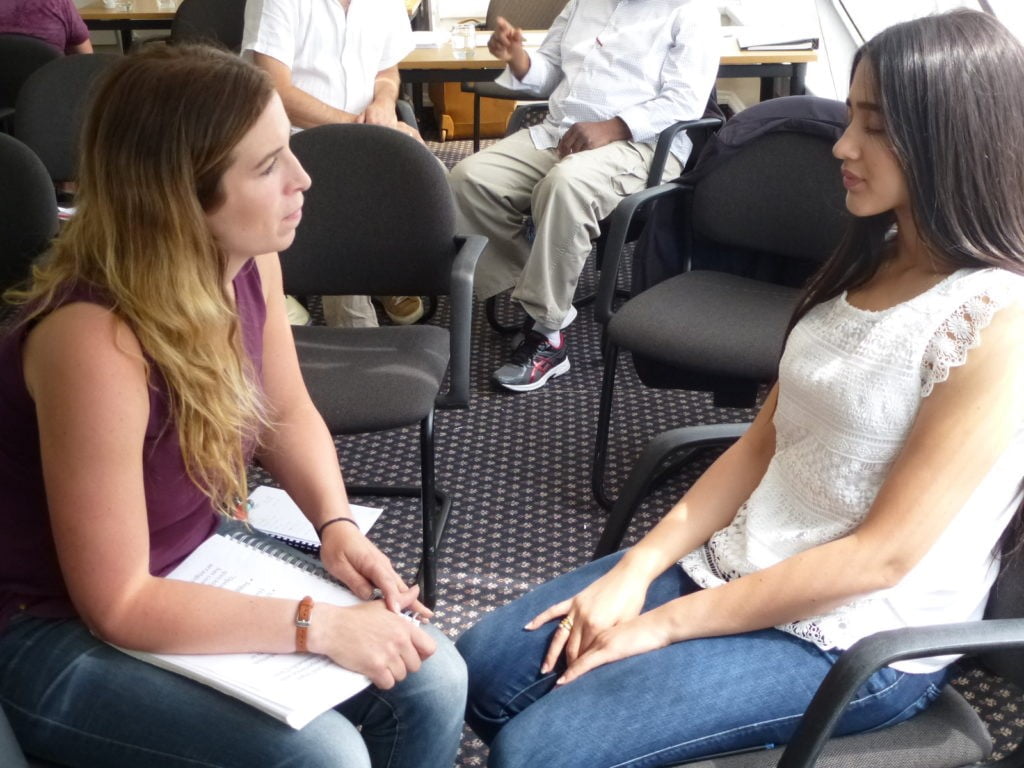NLP came about through the process of modeling other spectacular performers.

Both NLP and coaching have very broad definitions that are process rather than content-oriented. Here are some common definitions of NLP: The study of the structure of the subjective experience and, “NLP is an attitude and a methodology, which leave behind a trail of techniques”, the latter attributed to Richard Bandler. John Grinder defined NLP as, “The epistemology of returning to what we have lost – a state of grace”. NLP has come from a modeling methodology that has generated several techniques. Sometimes NLP is incorrectly identified just with the techniques.
There is a deeper relationship to change work than the simple techniques that are commonly called NLP today. If, as Bandler stated – …” leaves behind a trail of techniques”, then the techniques are not NLP. The attitude and methodology are what Neuro-Linguistic Programming is all about.
What else has NLP brought into being?
Then NLP has brought all sorts of other genres of change work into its family. The Now State (often called The Hakalua), comes from Hawaii and enables the perfect state for an NLP Practitioner to be in when he/she conducts their session (the attitude). The methodology is how an NLP Practitioner thinks and conducts the initial interactions with clients and groups. Through the ability to tune into a person/people (using Rapport techniques), the NLP Practitioner can get valuable information as to how (not why) a person has put together their own issue.
The presuppositions of NLP
Then in the background, an NLP Practitioner has many convenient beliefs (called Presuppositions) that enable them to see the client as their own powerful and reflective, self-generating being. A Presupposition such as “There is no failure, only feedback”. And back to themselves as excellent communicators “The Meaning of communication is the response you get”. NLP Practitioner takes full responsibility for the communication, taking out of the equation ‘resistant client’ or any other excuses. In fact, within NLP there is the presupposition “There are no resistant clients, just inflexible communicators”.
Armed with these many presuppositions, the Practitioner can now look at the structure and process of what the client is actually doing, rather than the story, which, most likely, they think is the problem.
For instance, when dealing with a client who is suffering from the label spelling dyslexia, the good NLP Practitioner would first observe the eye patterns of a client to see how they are trying to spell. Then they would check out the whole strategy the client is using, by seeing the eye patterns and listening intently to each step the client makes on the road to not spelling well.
Once the NLP Practitioner knows exactly the strategy, they can begin to change how the person interrelates. Then, change the strategy to a successful one.
NLP and Dyslexia
I recently ran a training where we asked a person (that has the issue of spelling) what was the hardest word to spell? As a group, we came up with “Reciprocate”. Funnily enough, half the group couldn’t spell it either so we knew it was a tough one. Within a few minutes, she could spell it easily. Then was able to spell it backward!
Therefore we can take away labels like “spelling Dyslexia” and replace them with the process of “not efficient strategy”. Which is more accurate and into the process, not the story or label. The good NLP Practitioner is always looking for how the client pieces their reality together (based on another presupposition “The Map is not the Territory”), and then will use various ways to assist the client with that challenge.
They will be armed with various techniques, yet, especially after a Master Practitioner program will be able to devise their own way of working, using variable pieces of the knowledge of change work (see the techniques of NLP) and work in their own way within a framework given.
Here is an overview of What is an NLP Practitioner?
- Ability to create deep rapport quickly through connecting with the client’s subconscious mind in safety
- The knowledge of sensory awareness, to know the timing of questions or reading responses
- Armed with the presuppositions of NLP have an empowering set of beliefs to work out of
- The grace to work with the structure and process of a situation and be able to ask very incisive questions that dig to buried truths (the metamodel)
- Gain access to the inner working including the pictures, thoughts, sounds, and feelings of a client, and move them around easily
- Work with deep-seated memories, with the knowledge of how to change the meaning of memories (the story)
- Read eye patterns and change old unworking strategies
- Communicate with the conscious use of language, including the use of predicates and The Milton Model
- Set up an environment for change to occur, also using ordeals and tasks to encourage the client to commit to the process.
- Use the ability to associate the client to powerful states and disassociate them from negative ones (sometimes called anchoring)
Hopefully, you have gained some knowledge of how an NLP Practitioner relates to a client, and through their attitude (curiousness and their Now State) they can tackle the process and structure of an internal issue and succeed where others may not.
CLICK HERE For More Course Inclusions and Our June Main Event![]()


















































